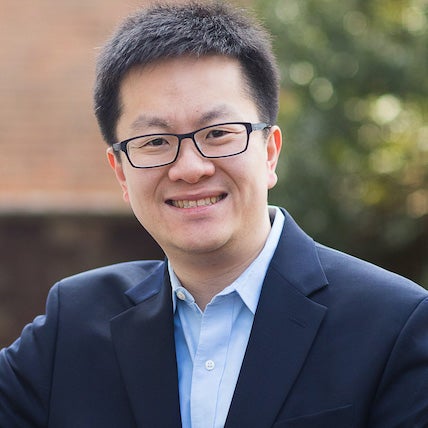
Chongzhi Zang, PhD
New University of Virginia School of Medicine research is raising questions about how our DNA begins to replicate both in healthy cells and in cancer.
DNA is the genetic material we inherit from our parents; it serves as the operating instructions for our cells. Our bodies replace approximately 330 billion cells every day, so it is vital for the DNA replication process to unfold correctly. Problems with this process can lead to cancer’s uncontrolled cell division. As such, scientists have been working diligently to understand what initiates the DNA replication process and have developed several tools to do so.
UVA’s new research, however, is calling into question the results being produced by those techniques and, in turn, challenging our very concepts of the origins of the DNA replication process.
Researchers co-led by UVA’s Chongzhi Zang, PhD, and Anindya Dutta, PhD, of the University of Alabama at Birmingham, conducted a comprehensive analysis of the results produced by five different techniques used to study the origins of DNA replication and found the results were inconsistent and could not be reconciled. That suggests something is wrong, Zang says: Either the results themselves are off or scientists have some incomplete understandings of the factors that initiate DNA replication.
“Our integrative analysis indicates that DNA replication origins occur at very different locations in different cell types,” said Zang, a computational biologist with UVA’s Center for Public Health Genomics and UVA Cancer Center. “Such diversity seems to be much greater than people thought before, and the reasons are still largely unknown for human cells which are very different from lower organisms like yeast.”
DNA’s Secret Origins
Scientists believe that DNA replication originates from about 50,000 sites on our chromosomes, the containers for our DNA inside our cells. To assess how well these origin sites have been identified, Zang and his team looked at 113 “origin profiles,” generated by five different techniques, for the entire human genome (our complete set of genetic material). They also looked at locations where chemical reactions occur between DNA and Origin Recognition Complex (ORC), a protein that is thought to be important in initiating DNA replication.
The techniques Zang and his team reviewed generated a vast amount of data, but almost none of that data was reproduced across the different techniques, the researchers report in a new scientific paper. The results for human cell lines were vastly less reproducible than for other cell types frequently used in scientific research, such as from yeast and fruit flies, the scientists say.
The results either point out issues with the techniques scientists are using or suggest that some widely held assumptions about the origins of DNA replication are wrong, Zang says. For example, cancer appears to be initiated by highly variable, extremely random events independent of even the most reproducible origins and binding sites. “Every cancer is different,” Zang said. “The highly variable distributions of replication origins in difference human cancer cell lines is another indicator of the complexity of cancer.”
Considering that they call into question conventional wisdom, Zang’s conclusions may prove controversial within the scientific community. But he says it is important for scientists to take a closer look to ensure that this foundational scientific research is correct.
“We are still far away from fully understanding the mechanisms of DNA replication, one of the most fundamental biological processes in our cells,” he said. “By using a data science and computational approach, we hope to advance the research in this area from a unique perspective.”
Findings Published
Zang and his collaborators have published their findings in the scientific journal eLife. The research team consisted of Mengxue Tian, Zhenjia Wang, Zhangli Su, Etsuko Shibata, Yoshiyuki Shibata, Dutta and Zang. The scientists have no financial interest in the work.
Zang is part of UVA’s Center for Public Health Genomics, Department of Public Health Sciences and Department of Biochemistry and Molecular Genetics. Dutta is professor and chair emeritus of UVA’s Department of Biochemistry and Molecular Genetics.
The research was supported by the National Institutes of Health, grants R01 CA60499, R35 GM133712 and K99 CA259526.
To keep up with the latest medical research news from UVA, subscribe to the Making of Medicine blog at http://makingofmedicine.virginia.edu.
Article written by Josh Barney, Deputy Public Information Officer, UVA Health.
Filed Under: Research
